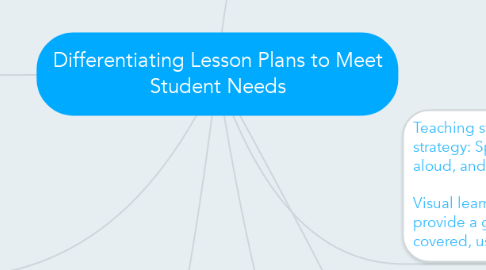Differentiating Lesson Plans to Meet Student Needs
by Jamine Stowe

1. Identify examples of the learning profiles, interests, and readiness levels for at least two students in each group. An auditory and visual learner who interests include listening to the stories being read to them by the audio version that comes with the book and looking at the words of the story that is being projected on the smartboard. The readiness level of the auditory learner is very low as he is able to listen to the entire story but when asked specific questions about the story he is unable to correctly answer. The readiness level of the visual learner is medium. She is able to answers questions connected to the text, but struggles with finding where exactly in the text the answer is.
2. Objective: CCRA.R.1Read closely to determine what the text says explicitly and to make logical inferences from it; cite specific textual evidence when writing or speaking to support conclusions drawn from the text.
3. Integration of 21st century: • Laptop/Ipad • Smartboard • Projectors/Displays
4. Summary: (1) The importance of identifying the learning profiles, interests, and levels of readiness of your students in planning for instruction; By knowing the learning profiles of your students you are able to best reach them when teaching a lesson so they are able to fully understand and grasp the concept you are teaching.
5. Teaching strategies: Auditory learner teaching strategy: Speaking and listening games, reading aloud, and story-telling and re-telling Visual learner teaching strategy: Oral quizzes, provide a general outline of the material to be covered, use charts, maps, and movies.
6. Summary: (3) Why you chose the teaching strategies that you did to meet the needs of your students. I chose these specific strategies because these would be most beneficial in meeting my students’ needs to be able to fully understand the objective and be able to complete the tasks that are tied to this objective.
6.1. Teaching Strategies: Auditory learner teaching strategy: Speaking and listening games, reading aloud, and story-telling and re-telling Visual learner teaching strategy: Oral quizzes, provide a general outline of the material to be covered, use charts, maps, and movies.
7. Summary: (2) How you will learn about your students’ learning profiles, interests, and levels of readiness; By giving your students an interest inventory that will inform you what type of learners your students are individually.


